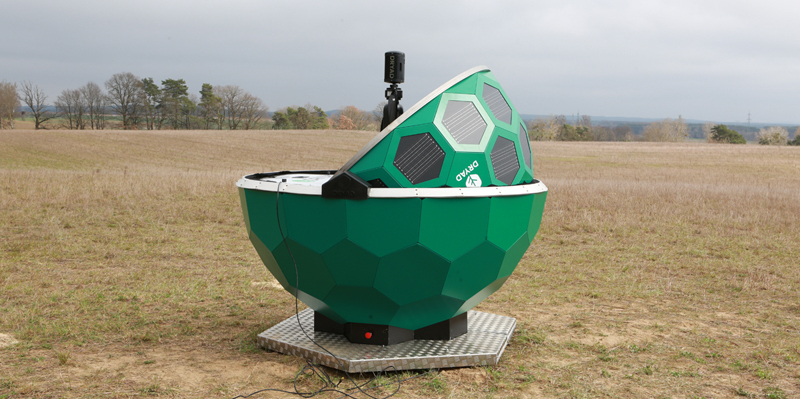Improved precise point positioning techniques are providing new levels of accuracy, flexibility and reliability for surveying in remote regions. Mark Richter explains how
Since the earliest days of satellite-based positioning, surveyors, mappers and other geospatial professionals have sought the holy grail of geolocation: achieving centimetre-level accuracy whenever and wherever it is needed.
The push for accuracy led first to real-time kinematic (RTK) solutions and then to real-time GNSS networks (RTN). These could provide positions at the centimetre level in real-time, which gave users an enormous step forward in productivity and flexibility.
RTK and RTN serve their users well and will continue to do so. But they have limitations: RTK users need to manage their own reference stations and stay within radio range of control points or establish new ones when needed; RTN eliminates the need for individual reference stations and allows users to cover larger areas, but these areas are still limited.
Both approaches also rely on radio or cellular communications to provide data to the GNSS rover, but if a data communications link is interrupted, precise real-time positioning stops.
More recently, precise point positioning (PPP), in which a single GNSS rover can produce accurate results without RTK or an RTN, has been addressing the need for accurate geolocation in remote regions, as well as solving the issues of geographic constraints and communication outages. Until recently, however, it has come with its own limitations: users often needed to wait 30 minutes or more to obtain a higher-accuracy GNSS position, which would still be sub-decimetre. That accuracy may be sufficient for some uses, but it’s not enough for many applications in surveying and construction.
Fortunately, these limitations are fading. Improved PPP techniques are providing new levels of accuracy, flexibility and reliability. Recent advances in Trimble’s CenterPoint RTX positioning service illustrate the new capabilities.
Making a good solution better
In contrast to the differential techniques used in RTK and RTN, PPP develops positions by modelling and correcting for three main sources of errors: satellite orbits, clock offsets and atmospheric effects. The correction data is delivered to a GNSS rover, which combines the information with its own satellite observations to produce accurate positions. Users who subscribe to a positioning service receive the corrections via communications satellites. Depending on the provider, PPP accuracy is typically in the decimetre to metre range.
Introduced in 2011, Trimble’s CenterPoint RTX is a commercial service that provides high-accuracy PPP corrections to users on seven continents who need centimetre-accuracy. But in May last year, Trimble released updated performance specifications for CenterPoint RTX: it can now produce horizontal accuracy of 2cm RMS with a convergence time of 15 minutes, with the Trimble CenterPoint RTX Fast service allowing for convergence in as little as one minute, where available.
This improved performance is achieved through several factors. First, Trimble operates a network of more than 100 GNSS tracking stations around the world that provide continuous GNSS observation data to the Trimble RTX servers. Second, Trimble RTX is not limited to the US’s GPS and Russia’s GLONASS services – it also uses signals from China’s BeiDou and Europe’s Galileo to provide a true multi-constellation solution, thereby enabling more robust modelling of error sources. Third, Trimble has developed enhanced modelling techniques for PPP. Improvements were also made to the correction streams carrying data to servers and GNSS rovers. With more data from more stations fed into ever-improving algorithms, overall system performance improves.
For example, Trimble can now model satellite orbits with an accuracy of 1-2cm in real time. Compare this to the broadcast orbit data, which is accurate to roughly 1m. Precise orbit data from the International GNSS Service gives centimetre accuracy, but that information is not available for 10 to 15 days after fieldwork.
The computations for atmospheric modelling and clock offsets are also improved. The atmospheric modelling works by analysing the radio signals sent from known locations of a satellite to a known ground station. This approach, which leverages the high accuracy models for orbits and clock biases, is essentially a direct measurement of the atmosphere at a specific location. As the density of stations increases, the model can become more accurate.
As a result, instead of using only global atmospheric models, Trimble RTX can also develop regional atmospheric models. In much of Europe and portions of North America, for example, where the density of tracking stations is sufficient, the regional atmospheric models are very accurate and provide higher resolution, thereby allowing significantly faster convergence times. Rapid convergence also uses the higher bandwidth available in these areas for transmitting correction data from communications satellites to the GNSS rovers. Positions can be obtained in these regions in less than one minute using CenterPoint RTX Fast. The ability to provide high-accuracy positioning also relies on increasing the capability of hardware in the field. New generation GNSS rovers such as the Trimble R10 have the ability to track all available signals as well as the PPP corrections, which are delivered on L-band transmission. The new rovers also provide the computing horsepower needed to handle the volume of data and complex computations on the fly.
During the convergence period, CenterPoint RTX users can see the accuracy estimates displayed on the controller in a manner based on the patented HD-GNSS approach used by Trimble, which doesn’t require traditional ambiguity fixing as in previous RTK positioning techniques. This allows the system to no longer be vulnerable against ‘wrong’ fixes and leads to a more reliable solution. Also similar to RTK, crews can occupy a known position and use the Quick Start technique to reduce convergence time to less than five minutes in areas where CenterPoint RTX Fast is not available.
Complementary technologies
It’s important to note that Trimble CenterPoint RTX is not a replacement for RTK or RTN. Rather, it is a complementary technology intended to support those users by providing increased flexibility and reliability. For example, when working with RTK or RTN (including those powered by Trimble virtual reference station (VRS) technology, users may encounter dead spots where the radio link to the base station or cellular connection with the VRS server is blocked or interrupted. In these cases, Trimble CenterPoint RTX provides a backup solution called Trimble xFill that enables real-time positioning to function for up to five minutes after the loss of the data link, enabling the user to continue operations such as stakeout with 2cm accuracy. Geospatial professionals who work in regions served by RTN or VRS may not need Trimble RTX. But for those who encounter limitations in RTK range and reliability, Trimble RTX provides an efficient, reliable alternative or backup that can keep field crews productive and on schedule.
For locations that lack sufficient ground control for GNSS surveying, PPP lets users bypass the need to establish local control points with suitable accuracy and density. That task can involve time-consuming static observations and processing before any real-time work can begin. As the density of ground stations increases, performance of RTX will also improve. We may see increased regional modelling, which can directly affect convergence time in those areas. As a result, Trimble RTX users in remote locations around the world will be able to work faster and with survey-grade accuracy.
Mark Richter is marketing director of Trimble’s advanced positioning division (www.trimble.com)
Subscribe to our newsletter
Stay updated on the latest technology, innovation product arrivals and exciting offers to your inbox.
Newsletter

